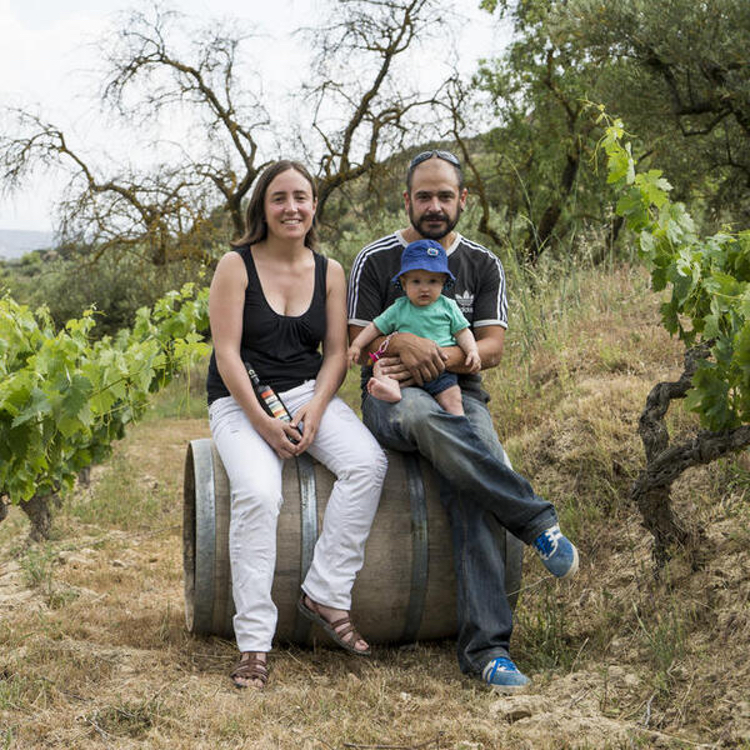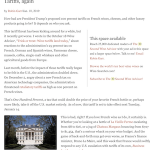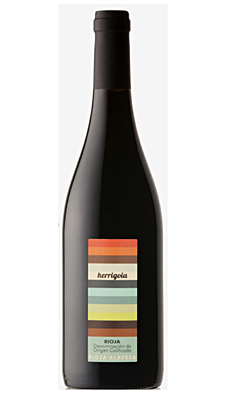You know you’ve stumbled into a nest of wine nerds when you encounter an argument about carbonic maceration and whether it’s a good or bad thing.
How to support us
The 30 Second Wine Advisor is a reader-supported community. If you enjoy these free reports, please consider subscribing! You’ll get twice as many reports on a wider range of wines, and you’ll help us pay the rent!
Say what? How can a technical issue about a simple, established wine making technique turn into a controversy? And what difference does it make to you and me?
Answering the second question first, it matters because it’s good to have some idea what’s inside the bottle (and whether it’s to our liking) before we pull the cork or unscrew the cap.
As to that first question, let’s back up and get oriented with a couple of definitions and a little history.
• Maceration: This is a widely used wine making technique in the grape skins, seeds and stems are left in the grape juice for some time after the grapes have been crushed. This allows time for the components of the grapes that produce color, flavor, and tannins to leach into the juice as fermentation begins, adding to the character and complexity of the finished wine.
This is most often done with red wines, for as short a time as a few hours for juice destined to become rosé wine, several days for lighter wines like Beaujolais, and up to a few weeks to extract more compounds for longer-lived red wines such as, among many others, Cabernet Sauvignon and Bordeaux blends, Syrahs, Tuscan and Piemontese reds, and Spain’s Ribera del Duero and Rioja. White wines occasionally go through maceration when it’s the wine maker’s intent to create a hefty white with rich color and robust flavor.
• Carbonic maceration: This is a special case, a form of maceration in which whole bunches of uncrushed grapes, typically, are placed in an oxygen-deprived environment, often a closed vat or tank filled with carbon dioxide to keep out the air. A different kind of natural fermentation begins inside the grapes, which gradually collapse and crush under their own weight as their natural sugars convert into alcohol, completing fermentation in a more traditional way.
Carbonic fermentation is a long tradition in Beaujolais, particularly but not exclusively in Beaujolais Nouveau. It’s a lesser-known custom in a few other wine regions, and a practice that’s gaining increasing attention among producers of natural wines around the world. Its perceived benefit is that wines produced in this way typically emerge with light, fresh, and very fruity characteristics that make for easy and pleasant drinking. At its extreme, especially in Beaujolais, they emerge with tutti-frutti aromas of bananas and bubble gum, a style that fails to excite universal acclaim among wine enthusiasts. Wines produced in this fashion are generally luscious in youth, intended to be drunk up, not cellared.
• Controversy: So what’s controversial about this? Simply this: Wine makers recently have been experimenting with carbonic maceration in regions better known for full-bodied, ageworthy wines. The resulting light, relatively frivolous styles don’t amuse more serious wine nerds, who value the traditions and want wines for cellaring. A Beaujolais-style Sangiovese or Tempranillo simply doesn’t appeal.
On the other hand, particularly as summer weather nears – the temperature rose to a muggy 88ºF here yesterday – there’s a lot to like about a fresh, fruity red wine that’s easy to sip but that still shows the character of respected regions like Rioja.

The El Mozo winery is known by two names: Compañón Arrieta, the surnames of sister and brother Itxaso and Unai, who manage the business together with Gorka Mauleón, Itxaso’s husband, and El Mozo, the nickname of their grandfather, who started the business. Pictured: Itxaso Compañon and Gorka Mauleón and their son Unai.
What’s more, before we dismiss these wines as modern innovations intended for millennials, consider this: In Rioja – particularly in the Rioja Alavesa region in Northern Spain’s Basque country – carbonic maceration is an ancient practice, and nowadays winery and vineyard workers still enjoy a few glasses of carbonic Rioja even as they ship out cases of the big, oaky style to consumers around the world.
Today’s featured wine, Herrigoia Rioja Alavesa, is made in the old fashion, a kind of partial carbonic maceration in which the organically produced grapes ferment and age briefly in open, not sealed, concrete vats, and the wine goes into bottles fresh and bright, with minimal winemaking. It’s delicious, and I think you’ll like it too.
Today’s Tasting Report
El Mozo 2022 Herrigoia Rioja Alavesa ($15.99)
Dark purple in color with a bright garnet edge, Herrigoia Rioja Alavesa breathes fresh cherry and plum aromas with back notes of roses and a pleasant earthy scent. Fresh red-fruit flavors carry over on the palate, shaped by brisk acidity and soft tannins. 14.1% alcohol imparts a perceptible but not annoying touch of heat. A blend of 85% Tempranillo and 15% of the white grapes Viura and Malvasia, it was made with organic farming methods and minimal intervention in the winemaking, fermented with carbonic maceration, made and aged in concrete vats with no oak. U.S. importer: Skurnik Wines, NYC. (May 2, 2024)
FOOD MATCH: Red meat, particularly lamb, is the classic match for red Rioja, although this lighter-style item, unoaked and made with carbonic maceration, goes well with plant-based dishes like our choice, Rancho Gordo Mayocoba beans in a spicy, Mexican-style preparation.
WHEN TO DRINK: Rioja in general is an ageworthy red, but this lighter-style, affordable item is drinking beautifully now. That’s what carbonic maceration does. Drink up, don’t cellar it.
VALUE:
This approachable, oak-free Rioja is a fine value at Wine-Searcher.com’s $16 average U.S. retail, which matches my local price; and an even better deal if you can find it in the $12-$14 range offered by some vendors on Wine-Searcher.
WEB LINK:
Here’s a fact sheet on this wine from the importer, Skurnik Wines. For more background, see this Skurnik report on the producer, Compañón Arrieta (also known as El Mozo).
FIND THIS WINE ONLINE:
Check prices and find vendors for El Mozo Herrigoia Rioja Alavesa on Wine-Searcher.com.
Read about Rioja Alavesa and browse wines and vendors from this Spanish wine region.
For more about the Rioja red varietal blend and a list of wines of this type, see this Wine-Searcher link,
Find other wines in the El Mozo Rioja portfolio ad browse vendors at this Wine-Searcher link.
Digging deeper
If you want to learn even more about carbonic maceration, check these articles:
• Wine-Searcher’s Complete Guide to Carbonic Maceration.
• What is Carbonic Maceration?
• What is carbonic maceration? Ask Decanter.
For an even more scientific approach, here’s a clear, detailed overview from Jamie Goode in his online publication, Wine Anorak:
• Carbonic maceration A closer look at this winemaking technique.
Finally, serious scholarship from the Viticulture and Enology Department of the University of California at Davis:
• Effect of winemaking process and addition of white grapes on the sensory and physicochemical characteristics of young red wines.
Find the wines you want
Explore Wine-Searcher
Wine-Searcher.com is the place to go online if you want to find where to buy a particular wine that interests you. What’s more, Wine-Searcher.com offers so much more. It’s well worth a visit just to discover its many features, including its popular list of the world’s Top 10 Best Value Wines.
Good wines we’ve tried under $10.99!
Want tips to still more good, inexpensive wines? Here are Wine-Searcher links to vendors and prices for a bunch more wines for $10.99 or less that I’ve told you about in recent years. In some cases the prices may have risen over the $10.99 mark since I reviewed them, but they should still be excellent bargains. Please tell us about your favorites!
- Santa Cristina Toscana
- Santa Marina Toscana Rosso
- Famille Perrin Ventoux La Vielle Ferme
- Boutinot “Uva Non Grata” Vin de France Gamay ($9.99)
- Laroque Cité de Carcassonne ($10.99)
- Famille Perrin 2019 “La Vielle Ferme” Rouge ($7.99)
- Querceto 2019 Chianti ($10.99)
- Porto Kopke Fine Ruby and Tawny Port ($9.99/375ml)
- La Fiera 2016 Montepulciano d’Abruzzo ($8.99)
- La Vieille Ferme Vin de France Rosé ($8.99)
- La Fiera Montepulciano d’Abruzzo ($8.99)
Sponsor the Wine Advisor.

Support The 30 Second Wine Advisor and help us pay the rent while reaching 25,000 dedicated readers with your sponsorship message in this space, at the top of this E-letter, and on our social media. If you’re an established business in wine, food, and similar ventures, there’s no better way to focus your message toward an audience that comes here for just those topics. See our Sponsorship Page, or email Robin Garr for more information.
Wine Forum and Social Media
You’re always welcome to drop by our WineLovers Discussion Group, the Internet’s first and most civil online community. Discussions are open for public viewing, but you must register to post. To request registration, please contact me at wine@wineloverspage.com, tell me your name, mention the Wine Advisor, and briefly say why you’d like to participate in the forum. Sorry about the minor red tape, but this is our simple, low-tech way to deter spammers and bots.
I’d also be delighted to have you visit and “like” our WineLovers Facebook Page.





